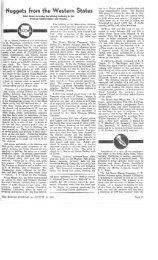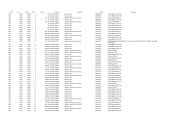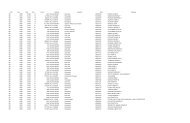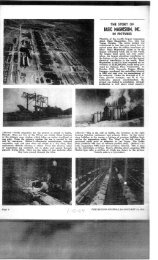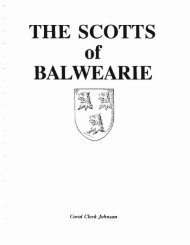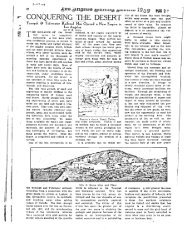A HISTORY OF THE CARRISA PLAINS Compiled by ... - Vredenburgh
A HISTORY OF THE CARRISA PLAINS Compiled by ... - Vredenburgh
A HISTORY OF THE CARRISA PLAINS Compiled by ... - Vredenburgh
You also want an ePaper? Increase the reach of your titles
YUMPU automatically turns print PDFs into web optimized ePapers that Google loves.
The Garcias have been residents of the Plains and near<strong>by</strong> communities since 1850. J. Garcia once<br />
purchased the Salcita from George Bill.<br />
A great-grandfather of the Lewis children homesteaded on the Navajo Creek around 1850. The old<br />
original ranch is still owed <strong>by</strong> a Lewis.<br />
The name King dates back to 1887 as well as names like Cavanagh, Freeborn and Lopez.<br />
Time and space does not permit us to mention all the pioneers at this time.<br />
Soda Lake of the Carrisa Plains<br />
Page | 15<br />
Streams running down from the Caliente Range on the south and the almost barren Temblor Range on<br />
the north are trapped on the Carrisa Plains at Soda Lake. Here the water cannot escape, so it sinks and<br />
evaporates leaving a salt deposit approximately four miles square. After heavy rains the trapped water<br />
remains for a few days only to evaporate during the dry periods.<br />
It was here that the early settlers obtained salt for their domestic use as well as securing salt for their<br />
livestock.<br />
During World War I (19167-1918) a narrow gage railway was built across one the of southern necks of<br />
the lake in order to remove the slat or soda to sell on the market. The railway moved the salt to a<br />
loading area where it was transferred to trucks to be taken to market. It is said that one of the uses for<br />
which it was used, was a dyeing agent for paper. This was <strong>by</strong> the Kraft paper company. However,<br />
because of the softness of the deposit beds, it became increasingly difficult to load the mineral. For this<br />
reason the marketing was discontinued.<br />
The United States Air Force used the lake during World War II as a bombing range for light artillery. One<br />
day a new pilot mistook road maintenance machinery for a target. This was probably on account of the<br />
similarity of color. Large caliber bullets killed the operator of the road machinery. Also, may head of<br />
cattle were reported to have been killed <strong>by</strong> careless pilots.<br />
Again just a few months ago the Farm Bureau reported that the Air Force wished to sec ure the area for<br />
a practice bombing range for a near<strong>by</strong> airbase.<br />
Indians on the Carrisa Plains<br />
At the time the white men landed on the west coast of California, the Chumash Indians used the Carrisa<br />
Plains for a hunting ground. These Indians were small in stature (about five feet) and they were few in<br />
number. The Chumash have often been called “Diggers” because they dug in the ground for a lot of their<br />
food, such as roots and herbs. On the Plains many caves are found, show evidence of fire used for<br />
warmth. However, it is thought that not much food was cooked.<br />
Anthropologists do not believe that these Indians painted the pictures found on so many rocks in the<br />
foothills and on the Painted Rock. By infra-ray, archaeologist have found that these paintings have many



